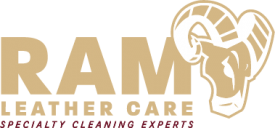Each animal hide is as unique as the animals they come from. In order to make them more uniform for using in garment construction, manufacturers will alter the original condition of the skins.
Hiding Irregularities
Many skins contain defects caused by wounds, insects, and veins. Manufacturers are able to mask these defects using fillers or “plugs” which can be lost in the standard leather cleaning process. Think of it as make-up for the hide! It will hide imperfections, but may be come out during the standard leather dry cleaning.
Hair Holes
Hair holes are a distinguishing feature of pig suede and will be more prominent on thin, weak skins. Manufacturers will often mask these using fillers which can be lost in the standard leather dry cleaning process.
Overstretched Hides
Leathers have a natural tendency to draw up slightly and contract as the skins dry out and natural oils are lost. After cleaning, the skins want to return to their normal dimensions. Slight shrinkage is eased by body heat during wear or through our tensioning equipment. However, in some cases, shrinkage is significant and can be attributed to excessive stretching of the skins during the tanning process.
Weak Skins
Animal skins have naturally occurring weak areas. Additionally, the thickness of the skins is determined by the way the tanners “split” or “skive” the skins. Skins that are split too thin will have the tendency to tear with use or in cleaning. Age and exposure to sun or damp environments will eventually cause skins to deteriorate and dry rot.
Belly Wrinkles
Skins from the belly area of an animal are naturally wrinkled and “bumpy”. Manufacturers will often chose this type of skin for a particular design. Other times, belly wrinkles are masked and combined with smooth leather panels. In the cleaning process, the skins relax back to their original shape and the wrinkles may become more pronounced.
